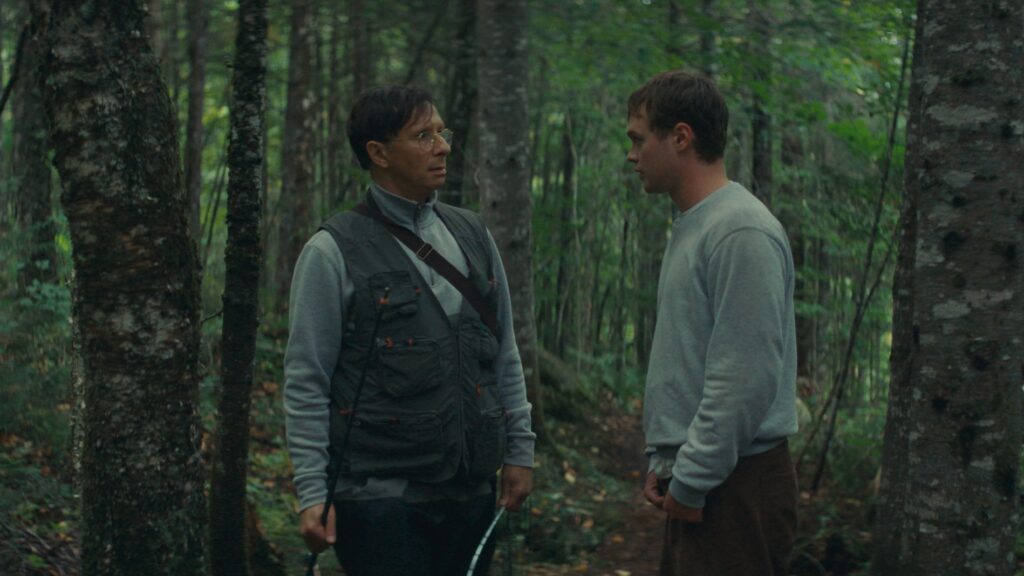Philippe Lesage’s ‘Who By Fire’ Joins a List of Good Recent Films That Navigate the Often Challenging Nature of Family
Although the director stumbles a bit toward the picture’s conclusion, Lesage has created something fulsome: a two-and-a-half-hour sojourn that doesn’t wear out its welcome.

Get a load of this from the writer and director of “Who By Fire,” Philippe Lesage: “I’ve never been easy on adults, or the masculine, or the order of the Pater, which seeks to stifle, to destroy.” He then soldiers on about how Pater “struggles desperately to maintain its hold on social codes and … with the utmost futility erects as truths the tenacious stereotypes of the feminine and masculine.”
Mr. Lesage’s pontifications bear quoting at length if only to serve as the umpteenth example of an old saw: “Trust the art, not the artist.” You’d never guess from his atrocious blather that “Who By Fire” is a film of rare merit, of finely wrought contradictions and tensely stated ironies. Although the director stumbles a bit toward the picture’s conclusion, Mr. Lesage has created something fulsome: a two-and-a-half-hour sojourn that doesn’t wear out its welcome.
Add “Who By Fire” to a list that includes “Murina,” “Joyland,” “One Fine Morning,” and “Tótem” — that is to say, recent and very good films that navigate the often challenging nature of family. The pace here is measured and the tone intimate but wary. We watch as the protagonists reveal themselves while navigating the lush forests of Canada or bundled within the environs of a rustic cabin. Director of photography Balthazar Lab earns his keep by elaborating upon the greenery of the former and the homey ambiance of the latter.
Key scenes are situated around the dinner table and its bounty of good food, fine wine, and long-standing begrudgements. Mr. Lesage isn’t a whiz-bang director: The camera is often stationary and when it moves, it does so with a deliberation that amplifies the drama at the heart of the narrative or, rather, narratives. “Who By Fire” focuses on the tenuous correspondences between friendships and generations, successes, compromises, and failures.

The film begins on an off-note: a car winds along a mountain highway over what seems an unreasonable amount of time. The extended take intimates a level of trepidation that is confirmed by the accompanying soundtrack, a droning rush of ambient music configured by sound designer Frédéric Cloutier. When the camera ultimately alights upon the interior of the car, it does so through a closeup on the hands and knees of two of its passengers. How telling can the merest of gestures be? Plenty.
At the wheel is screenwriter Albert (Paul Ahmarani), who is chauffeuring his two children, Aliocha (Aurelia Arandi-Longpré) and Max (Antoine Marchand-Gagnon), along with Max’s friend, Jeff (Noah Parker). They’re off to the country retreat of a film director, Blake (Arieh Worthalter), Albert’s best friend and former collaborator. When the question arises as to why the two men no longer collaborate, Blake and Albert are either diplomatic or mum — until they aren’t.
Even before their rift is revealed, we intuit a resentful and often bullying tone to their joshing. Albert is strait-laced and foppish, an oenophile whose excessive tippling is regularly commented upon by his children. Blake is rough hewn, dressed down, and self-righteous: He is aghast upon learning that Albert has taken on a job writing for a children’s television program.
Selling out is the least of Albert’s problems: Aliocha becomes the subject of romantic attentions that are alternately tolerated, rebuffed, and, when succumbed to, unseemly. Faces are slapped, hearts are broken, and lives are put in peril.
“Who By Fire” is partly a coming-of-age story and partly a meditation on the ennui that can accompany middle-age. Mr. Lesage sets up the parameters of both with notable patience and, notwithstanding a drifting byway or two, follows through on it with merciless precision.
The dinner table scenes mentioned earlier are tours de force of ensemble acting; the intimations of violence peppering the film are all the more scarifying because of their unpredictability. Heat and light, if not a steadying sense of resolution, are generated by this mercurial and impressive movie.

